Click to Chat
I'm online now.
Fhopepack Innovation
The Coil Wrapping Machine Price offers a cost-effective solution for securely wrapping metal coils, enhancing their protection against corrosion and damage during transportation. Designed for robust performance, it ensures operational efficiency and durability, making it ideal for heavy industrial use.
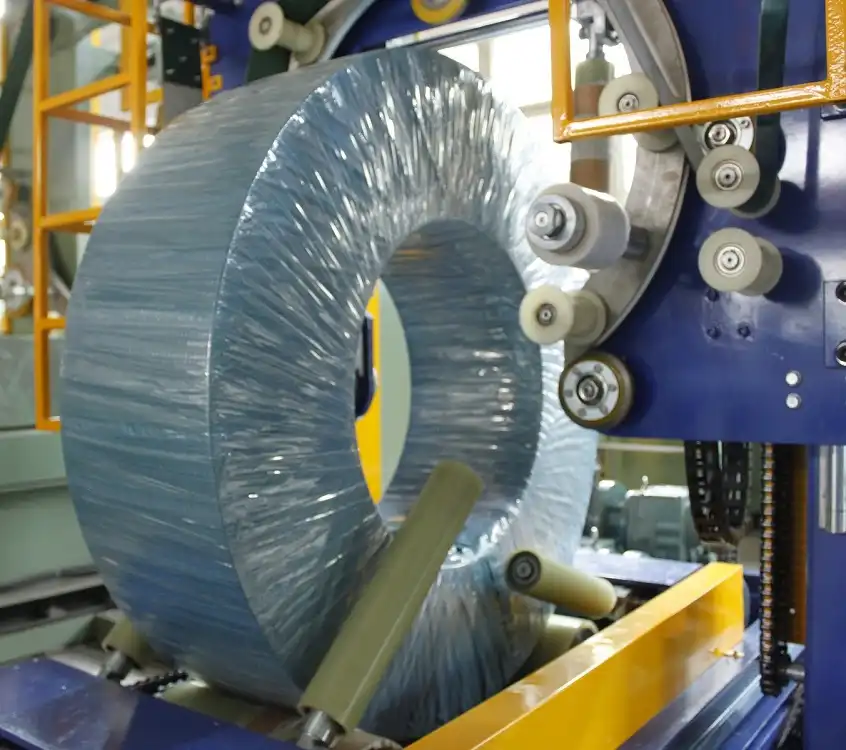





Introduction
Coil packing machines are specialized industrial equipment designed to wrap, package, and protect a diverse array of coiled products, from steel and wire to cable and hose coils. Their primary function is to automate the packaging process, preserving product integrity during storage and transportation, while enhancing speed, consistency, and operational efficiency. These machines are indispensable in sectors like steel, aluminum, wire, cable, and plastic production, protecting coils against moisture, dust, corrosion, and mechanical damage. For us as manufacturers, understanding the cost drivers and pricing strategies for these machines is crucial to effectively meet market needs and communicate value.
This report provides a comprehensive analysis of the multifaceted factors manufacturers consider when determining the price of coil packing machines. It dissects core machine specifications, automation levels, construction quality, material handling versatility, advanced operational functionalities, customization scope, manufacturer profile, and service ecosystems. By elucidating these elements, this report aims to clarify the cost structure from a manufacturing perspective and the value proposition we offer our clients.
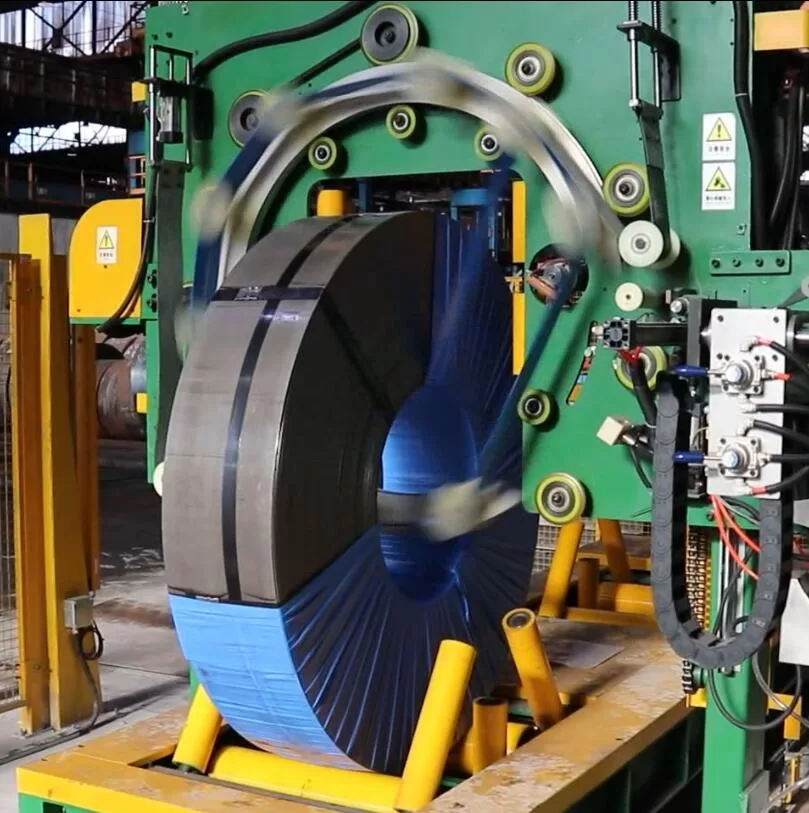
The fundamental physical and operational characteristics of coil packing machines are primary drivers of our manufacturing cost and, consequently, the base price.
A. Machine Type and Operational Mechanism The configuration and working principle are pivotal in defining capabilities and manufacturing costs. Choices between horizontal and vertical orientations, alongside specific wrapping or strapping mechanisms, cater to different product types and protection levels, impacting engineering complexity and material usage.
Horizontal vs. Vertical Orientation:
Operational Mechanisms (Wrapping/Strapping): The packaging material application method directly impacts manufacturing complexity.
The selection of an operational mechanism is driven by required protection levels, directly impacting complexity and manufacturing cost. Through-eye wrappers, providing more complete coverage, are generally more complex and thus command higher prices. Integrated systems, combining multiple operations like wrapping and strapping, are inherently more sophisticated and expensive due to coordination, material management, and complex control logic.
B. Coil Handling Capacity (Physical Dimensions and Weight) A machine's capacity for varying coil dimensions (Inner Diameter - ID, Outer Diameter - OD, width) and weights is a significant cost factor.
C. Packing Speed and Overall Throughput Efficiency The rate at which a machine processes coils significantly influences manufacturing cost and price.
| Machine Type/Orientation | Primary Operational Principle | Typical Coil Applications | Common Packing Materials | Key Capacity Drivers (Coil OD, Weight) - Impact on Mfg. Cost | Typical Speed/Throughput Range - Impact on Mfg. Cost | General Price Tier Indication (Reflecting Mfg. Cost & Value) |
|---|---|---|---|---|---|---|
| Horizontal Orbital Wrapper | Ring orbits horizontally around flat coil | Steel, wire, cable, hose, specialized coils | Stretch film, VCI paper, PE film | Larger/heavier = more robust materials, larger frame, powerful drives (High Cost) | Higher speed = advanced motors/controls (High Cost) | Mid to Premium |
| Vertical Orbital/Through-Eye Wrapper | Ring orbits/material passes through eye of upright coil | Steel, wire, cable, narrow slit coils | Stretch film, VCI paper, PE film | Larger/heavier = more robust materials, larger frame, powerful drives (High Cost) | Higher speed = advanced motors/controls (High Cost) | Mid to Premium |
| Radial Wrapper | Wraps OD (circumference) only | Paper rolls, fabric rolls, some pipe coils | Stretch film, paper | Varies, less demanding than orbital for heavy coils (Moderate Cost) | Moderate speed requirements (Moderate Cost) | Entry to Mid |
| Shrink Wrapper | Heat shrinks film tightly around coil | Various coils needing tight seal | Shrink film (POF, PE) | Varies by coil type, heat tunnel adds complexity (Moderate to High Cost) | Dependent on heat tunnel capacity (Moderate to High Cost) | Mid to Premium |
| Strapping Machine (Standalone/Auto) | Applies PET or steel straps radially or through-eye | Securing steel, wire, heavy coils | PET straps, Steel straps | Robust mechanisms for heavy loads (Moderate to High Cost) | Varies, auto lines more complex (High Cost for auto) | Mid to High (for auto lines) |
| Horizontal Form/Fill/Seal | Forms bag, fills with coil (often smaller items), seals bag | Smaller wire/cable coils, hose coils | Plastic/paper bags | Simpler mechanisms for smaller items (Low to Moderate Cost) | Variable, often for lower throughput (Low to Moderate Cost) | Entry to Mid |
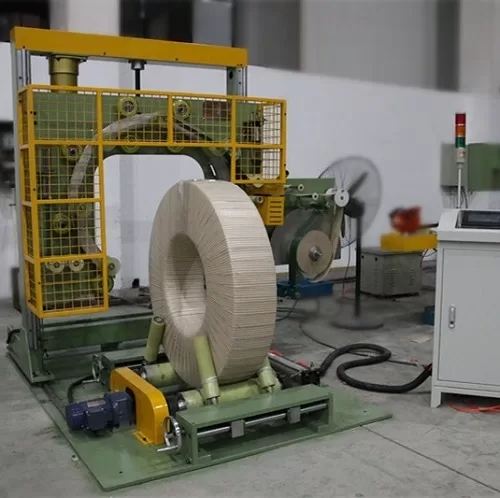
The degree of automation incorporated is one of the most significant factors influencing manufacturing complexity and price.
A. Manual and Semi-Automatic Systems These systems represent the lower end of the automation spectrum, less costly to produce.
B. Fully Automatic Systems These systems represent the highest level of automation, designed for efficiency, consistency, and high-volume operations with minimal human intervention, incurring the highest manufacturing costs.
C. Analyzing the Return on Investment (ROI) for Different Automation Levels We emphasize substantial long-term benefits that justify the price for higher automation.
| Automation Level | Illustrative Price Range (Reflecting Mfg. Cost & Value) | Key Features & Operator Involvement (Impacting Mfg. Complexity) | Customer Benefit: Labor Costs | Customer Benefit: Throughput/Efficiency | Key ROI Drivers (Justifying Price) |
|---|---|---|---|---|---|
| Manual | <$5,000 - $10,000 | Manual load, manual wrap initiation/guidance (Low Mfg. Complexity) | High | Low | Low initial cost |
| Semi-Automatic - Basic | $10,000 - $30,000 | Manual load, auto wrap cycle, manual film attach/cut (Moderate Mfg. Complexity) | Moderate | Medium | Balance of cost & some automation benefits |
| Semi-Automatic - Advanced | $25,000 - $70,000 | Manual load, auto wrap, auto film clamp/cut, powered pre-stretch (Higher Mfg. Complexity) | Moderate to Low | Medium to High | Improved efficiency, some labor savings |
| Fully Automatic - Standalone | $50,000 - $150,000 | Auto coil feed (simple), auto wrap, cut, eject; PLC/HMI (High Mfg. Complexity) | Low | High | Significant labor savings, speed, consistency |
| Fully Automatic - Integrated Line | $150,000 - $500,000+ | Conveyor feed, auto positioning, wrapping, strapping, palletizing; MES/ERP link (Very High Mfg. Complexity) | Minimal | Very High | Max throughput, system efficiency, data integration |

Physical construction, component caliber, and engineering integrity profoundly affect operational lifespan, reliability, and Total Cost of Ownership (TCO).
A. Build Quality: Frame Construction Materials and Overall Engineering The structural foundation plays a vital role in longevity.
B. Quality and Sophistication of Critical Components Machine performance and lifespan heavily depend on component quality.
The selection of PLC and HMI components reflects the machine's control sophistication and price. Premium PLCs offer superior processing power for complex, high-speed operations. While high-quality motors, durable bearings, and precise sensors add to initial purchase price, they ensure long-term reliability and minimize downtime, representing a strategic investment in TCO.
C. Impact of Build and Component Quality on Machine Lifespan, Reliability, and Total Cost of Ownership (TCO) Our initial investment in build and component quality has far-reaching implications.
| Aspect/Component | Standard/Basic Option (Lower Mfg. Cost) | Premium/Heavy-Duty Option (Higher Mfg. Cost) | Estimated Impact on Initial Machine Price (Our Pricing Strategy) | Key Long-Term Benefits (Customer Value Proposition) | Impact on TCO (Customer Perspective) |
|---|---|---|---|---|---|
| Frame Construction | Painted Mild Steel | Stainless Steel / Heavy-gauge reinforced mild steel | Baseline / +10-20% (SS) | Standard lifespan / Extended lifespan, corrosion resistance, structural rigidity | Higher potential maintenance / Lower maintenance |
| Main Drive Motors | Standard AC Motors | High-Efficiency AC Motors / Servo Motors | Baseline / +5-15% | Basic control / Higher precision, energy savings, better dynamic response | Standard energy use / Reduced energy costs |
| Control System PLC | Basic PLC (e.g., budget brand) | Advanced PLC (e.g., Siemens S7-1500, Allen-Bradley ControlLogix) | Baseline / +15-30% | Basic automation / Advanced diagnostics, complex recipes, integration capabilities | Higher risk of obsolescence / Future-proof |
| HMI | Small, button-based or basic touchscreen | Large, high-resolution touchscreen with advanced graphics & features | Baseline / +5-10% | Limited interaction / Intuitive operation, better diagnostics, recipe management | Longer learning curve / Easier operation |
| Sensors | Standard Photoelectric Sensors | Laser/Optical Sensors, Vision Systems | Baseline / +5-15% | Standard accuracy / Higher precision, reliability, advanced detection capabilities | More prone to errors / Fewer errors |
| Bearings & Transmissions | Generic or lower-tier brands | Premium brands (e.g., SKF, FAG), oversized for load | Baseline / +5-10% | Standard wear life / Longer life, smoother operation, reduced friction | More frequent replacement / Less downtime |
| Overall Engineering | Standard design practices | Robust design for 24/7 operation, precision assembly, modularity | Baseline / +10-20% | Adequate for intended use / Higher reliability, easier maintenance, potential upgrades | Higher risk of failure / Increased uptime |

A machine's adaptability to handle diverse packing materials and techniques significantly influences design and manufacturing complexity, and thus price.
A. Capability to Handle Different Packing Materials Machines designed for multiple materials require more complex engineering and components.
B. Support for Various Packing Methods Beyond material versatility, machines may employ multiple packing methods, adding to design and production costs.
C. Design Complexity and Cost Implications of Multi-Material/Multi-Method Machines Versatility inevitably leads to increased machine complexity and manufacturing cost.
| Machine Capability Level | Key Design Additions/Complexities (Our Mfg. Effort) | Estimated Relative Price Impact (vs. Basic Single Material/Method) (Our Pricing) | Primary Benefit of Added Capability (Customer Value) | Considerations for Justifying Cost (Customer Decision) |
|---|---|---|---|---|
| Single Material - Stretch Film Only | Standard dispenser, tension control, cutter (Baseline Mfg. Cost) | Baseline | Basic protection, containment | Low-cost, high-volume applications with standard protection needs |
| Dual Material - Stretch Film + VCI Paper | Additional dispenser for paper, specific guides/cutters, potential for dual-head application (Increased Mfg. Cost) | +15-30% | Corrosion protection in addition to containment | Export shipments, long-term storage, products susceptible to corrosion |
| Multi-Material - Film, Paper, Woven Fabric | Multiple specialized dispensers, complex material feed paths, advanced tension/cutting for each (High Mfg. Cost) | +30-60% | Versatile protection for varied surfaces, abrasion resistance, moisture control | Diverse product range with different protection needs, demanding handling conditions |
| Single Method - Orbital Wrap Only | Standard wrapping unit (ring/shuttle) (Baseline Mfg. Cost) | Baseline | Standard containment and surface protection | General coil packaging, palletizing (for pallet wrappers) |
| Dual Method - Orbital Wrap + Strapping | Integrated strapping head(s), separate material feed for straps, synchronized controls (Significant Mfg. Cost Increase) | +50-100% | Securement against uncoiling/shifting, plus surface protection | High-value coils, heavy coils needing robust securement, prevention of telescoping |
| Multi-Method - Wrap, Shrink, Strap (Integrated Line) | Multiple distinct processing stations (wrapping, heating/shrinking, strapping), complex conveying & sequencing logic (Very High Mfg. Cost) | +100-200% or more | Ultimate protection: containment, tamper evidence, robust securement | High-value products, retail presentation needs, maximum protection against all transit hazards |
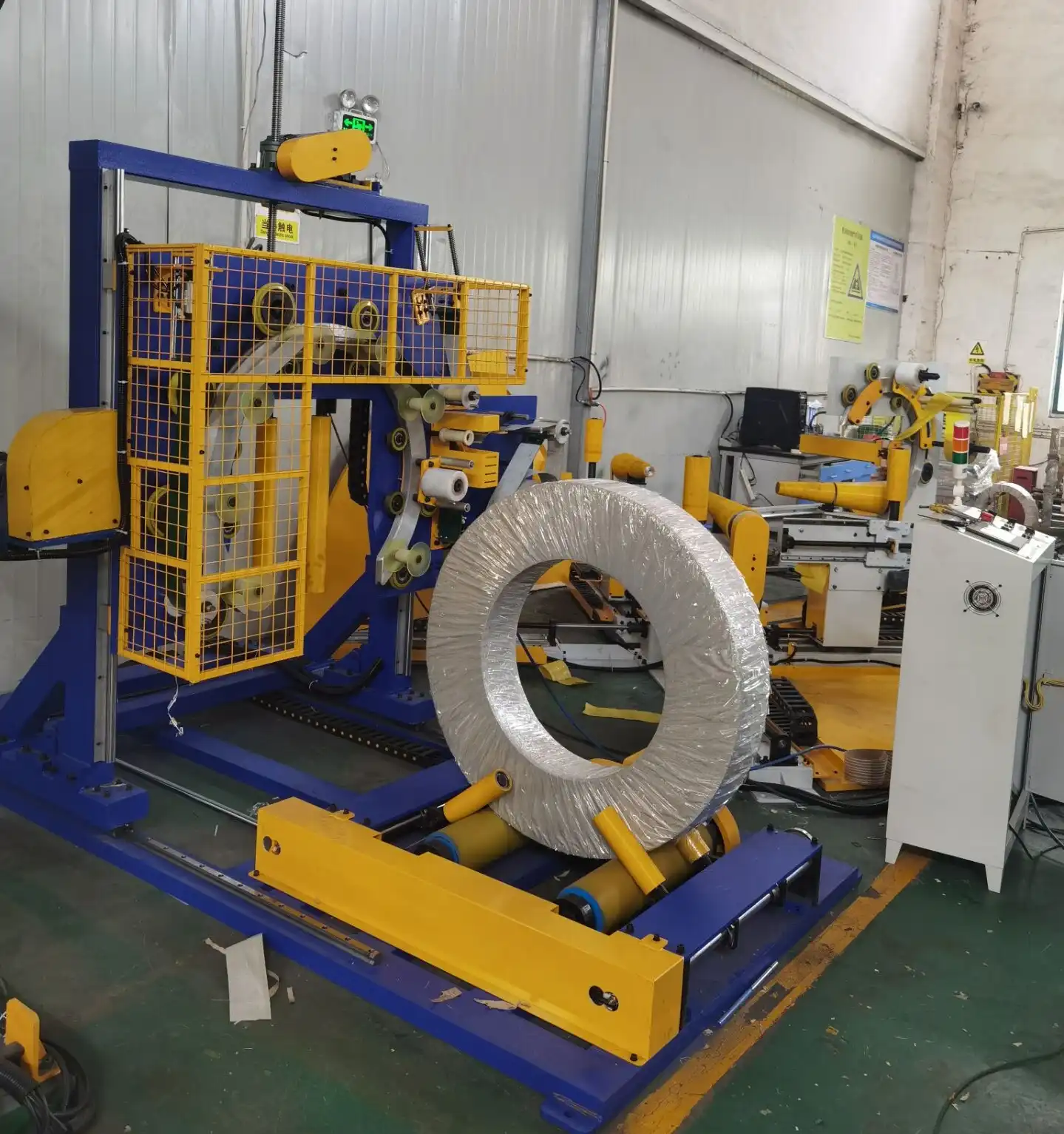
The sophistication of software, control systems, and intelligent features significantly contribute to development and production costs, enhancing operational efficiency and data insights.
A. Sophistication of Control Systems (PLC Programming, HMI User Interface) and Sensor Technology The machine's intelligence is determined by its control system and sensor array.
B. Value-Added Features (e.g., Automatic Fault Diagnosis, Remote Monitoring, Data Logging) Modern machines offer advanced features that enhance maintainability and oversight, adding to development costs.
These features, though increasing initial cost, offer significant differentiation and promise tangible benefits like reduced downtime, optimized maintenance, and improved Overall Equipment Effectiveness (OEE).
C. Cost and Benefits of Integration with Higher-Level Systems (MES/ERP) The ability to communicate with enterprise systems is critical for integrated manufacturing.
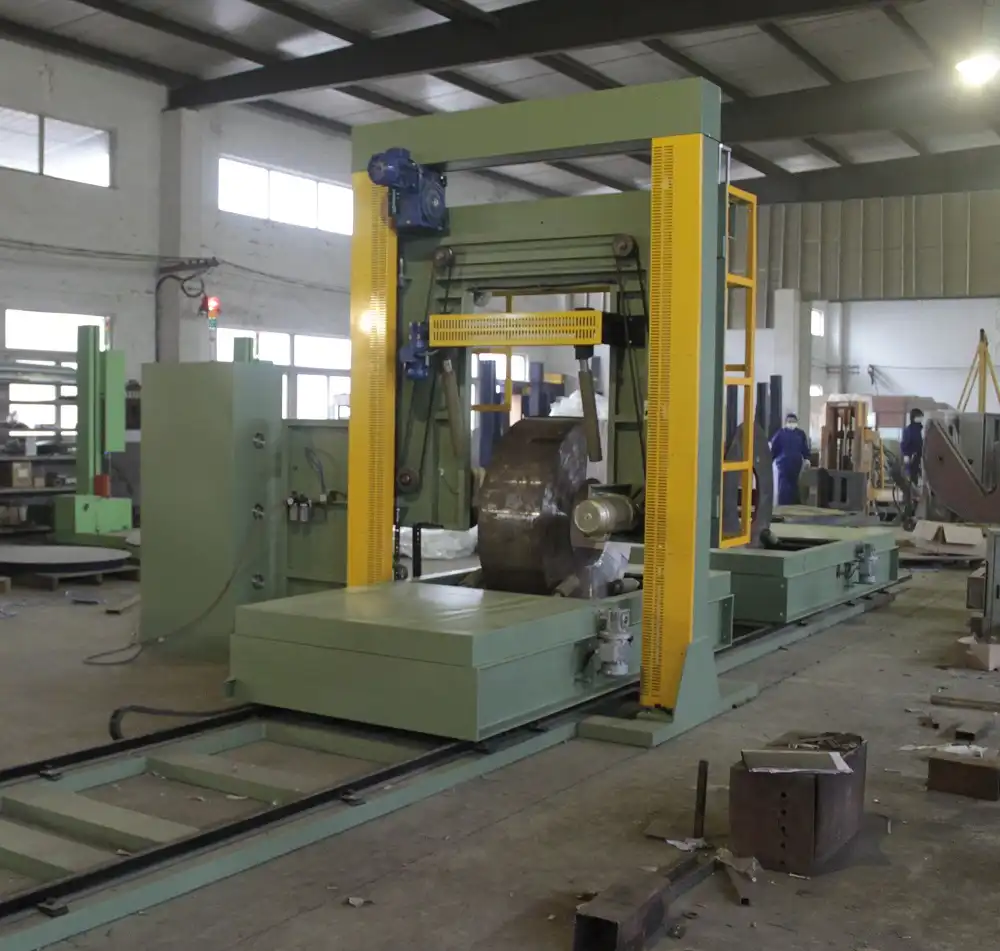
The final price is significantly influenced by tailoring to unique needs, seamless integration, and necessary support equipment.
A. Customization to Meet Specific Production Needs Unique requirements necessitate customization, impacting engineering and manufacturing costs.
B. Costs Associated with Integrating the Coil Packing Machine into Existing Production Lines Integrating a new machine into an established line is complex and carries associated costs.
C. Price Impact of Necessary Auxiliary Equipment Various pieces of auxiliary equipment are often required for effective machine function.
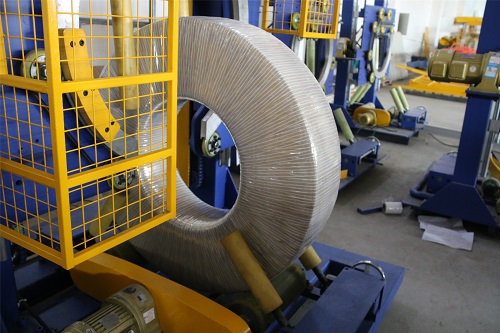
Factors related to the manufacturer (brand, market standing, country of origin) and the comprehensiveness of services offered significantly influence price.
A. Influence of Manufacturer's Brand Reputation, Market Presence, and Country of Origin on Pricing Our identity and background play a significant role.
B. Impact of Included Services: Installation, Operator Training, Warranty Terms, and After-Sales Support The scope and quality of services bundled with the machine are significant value components affecting cost.
C. Availability and Cost of Spare Parts and Ongoing Maintenance Long-term operational viability depends on spare parts and maintenance.

The price for coil packing machines spans a wide range, reflecting manufacturing costs, capabilities, and delivered value.
A. Illustrative Price Ranges for Different Categories of Coil Packing Machines Prices vary based on configuration, manufacturer, and market conditions.
B. Balancing Initial Purchase Price with Long-Term Operational Costs and Value A prudent investment extends beyond initial price tags.
The concept of "value" is multifaceted. Businesses seek machines that are affordable, reliable, durable, and offer essential functionalities. The "right price" is not absolute but intrinsically tied to "fit-for-purpose" within a specific operational context and alignment with broader strategic objectives. An expensive, underutilized machine is a poor investment, as is a cheap, frequently malfunctioning one. The optimal investment is for a machine that reliably meets defined operational needs and strategic direction, offering the best overall value rather than just the lowest upfront cost.
Secure exceptional value in 2024 with our competitively priced Semi-Automatic Coil Wrapping Machines, sourced directly from top-rated manufacturers.The Coil Wrapping Machine is set with a focus on providing maximum value for industrial users needing robust, reliable wrapping solutions for steel coils, wire coil, hose coil... This machine ensures each coil is securely wrapped to prevent moisture, dust, and damage during storage or transport. Designed for ease of use and efficiency, it features adjustable settings to handle different coil sizes and wrapping materials, from stretch films to more durable options like VCI paper. Its sturdy construction and automated system reduce labor costs and increase throughput. Perfect for manufacturers and distributors, it offers a practical investment to safeguard product quality and streamline operations.

In slitting service centers, coil packing machines is the baisc equipment for the precise handling and packaging of steel coils used in automotive manufacturing. These coils are critical components for applications such as shock absorbers, which play a vital role in vehicle suspension systems. Made from high-grade steel, these coils must adhere to strict dimensional tolerances to ensure optimal functionality. The coil packing machine applies protective layers that guard against corrosion, scratches, and impacts during transportation and storage. This meticulous packaging not only preserves the mechanical properties of the coils but also streamlines inventory management. By reducing the risk of damage during handling and transport, manufacturers can maintain the quality and performance of these vital components, ultimately ensuring safety and reliability in automotive applications.
In the plastic pipe manufacturing sector, coil packing machines are crucial for the safe handling and preservation of high-density polyethylene (HDPE) and polyvinyl chloride (PVC) pipe coils eye through packing. These coils, typically measuring 100 meters in length and weighing around 20KG, are carefully wrapped using specialized materials that prevent scratches, environmental damage, and contamination. The protective packaging is essential for maintaining the integrity and performance of the pipes, as any damage could compromise their durability and functionality in various applications, including plumbing and drainage systems. By utilizing coil packing machines, manufacturers can ensure that these high-value products remain in excellent condition with fabric and strech film packing, supporting rigorous quality standards and minimizing risks associated with product failures in the field.
In steel wire drawing factories, coil packing machines significantly enhance both efficiency and safety in the production process. These machines handle steel coils that typically measure 100-900mm in width, and weigh approximately 10-100 kilograms. By wrapping these coils in high-quality protective materials, manufacturers effectively shield them from environmental contaminants such as moisture and dust. This protection is critical in preserving the mechanical and structural properties of the steel, ensuring that the final wire products maintain durability and corrosion resistance. Implementing these machines not only reduces material wastage but also ensures consistent quality across production batches. As a result, manufacturers can produce steel wire that meets the stringent demands of various applications, including automotive and construction, ultimately contributing to safer and more reliable product
|
Model |
Coil ID |
Coil OD |
Weight |
Customized |
Price |
|
FPH-100 |
Φ120~Φ500mm |
Φ300-Φ600mm |
2-50kg |
available |
$5000-$9000 |
|
FPH-200 |
Φ200~Φ600mm |
Φ500~Φ800mm |
5-50kg |
available |
$7000-$11000 |
|
FPH-300 |
Φ250~Φ800mm |
Φ600~Φ900mm |
5-80kg |
available |
$9000-$13000 |
|
FPH-400 |
Φ500~Φ600mm |
Φ800~Φ1000mm |
10-100Kg |
available |
$11000-$13000 |
|
FPH-500 |
Φ500~Φ800mm |
Φ800~Φ1200mm |
20-200kg |
available |
$13000-$15000 |
I'm online now.